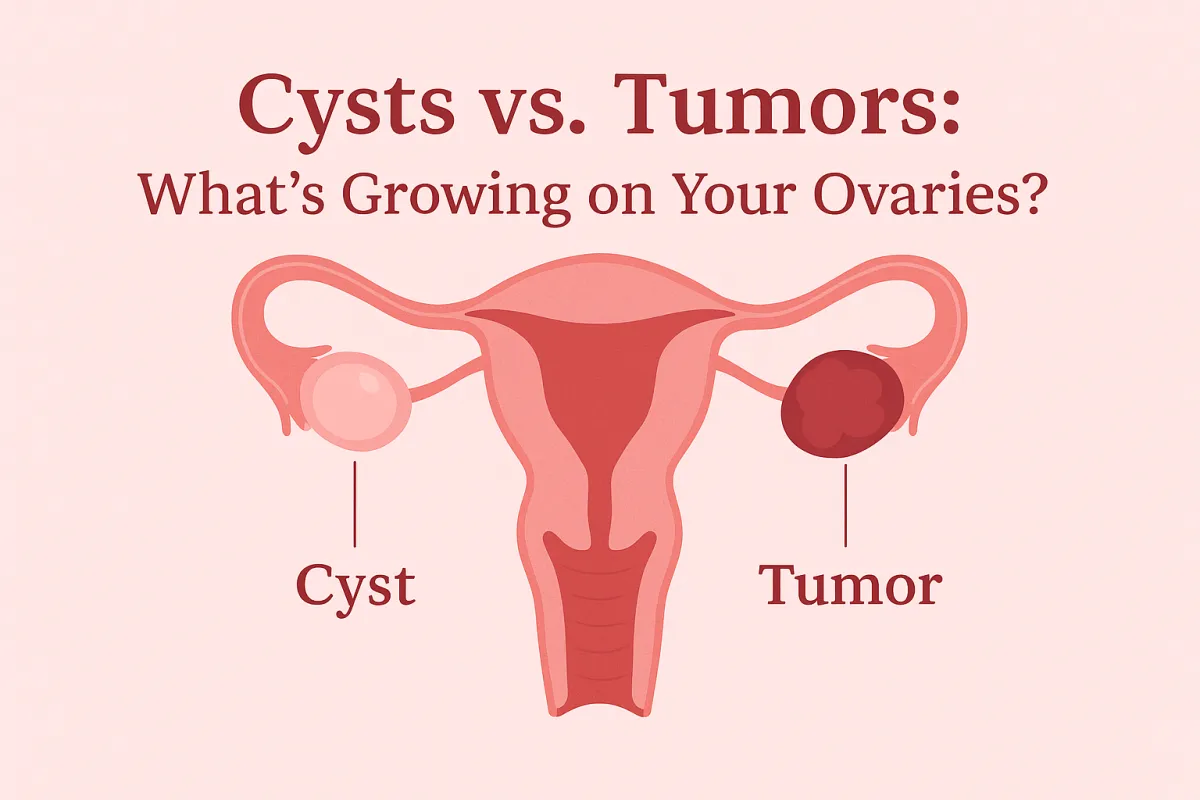
Seeing Is Believing: The Benefits of Ultrasound for Patients and Providers

Cysts vs. Tumors: What’s Growing on Your Ovaries?
Cysts vs. Tumors: What’s Growing on Your Ovaries?
Ovarian health can feel like a mystery—but it doesn’t have to be. If you've ever been told you might have a cyst or tumor, you’ve probably felt a wave of fear, confusion, or both. Let’s break it down together in simple terms so you can better understand what’s happening in your body—and what steps you can take next.

What Are Ovarian Cysts?
Ovarian cysts are fluid-filled sacs that develop on or inside an ovary. Most of the time, they're harmless, painless, and go away on their own without treatment. These are actually very common during the reproductive years.
Common Types of Cysts:
Functional Cysts – The most common type, forming as part of your menstrual cycle.
Dermoid Cysts – Made up of different types of tissues (like skin or hair).
Cystadenomas – Filled with watery or mucous material.
Endometriomas – Related to endometriosis, formed from uterine lining tissue.
Symptoms to Watch For:
Pelvic pain (usually one side)
Bloating
Irregular periods
Pain during sex or bowel movements
Most cysts are benign (non-cancerous) and don’t need surgery—but it's still important to monitor them with an ultrasound.

What Are Ovarian Tumors?
Tumors, unlike cysts, are abnormal growths that may be either solid or filled with fluid. They can be benign (non-cancerous) or malignant (cancerous)—which is why checking them early matters so much.
Tumor Types:
Benign tumors – Usually slow-growing and non-threatening.
Borderline tumors – Have the potential to become cancerous.
Malignant tumors – Cancerous growths that may spread.
Symptoms Might Include:
Persistent bloating
Feeling full quickly
Unexplained weight loss
Changes in bowel or bladder habits
Pain in the pelvis or lower abdomen
Early detection through imaging is key in determining if further testing or a referral is needed.
How Can You Tell the Difference?
This is where Atlanta Ultrasound comes in. An ultrasound scan is a safe, non-invasive way to check what’s going on with your ovaries. It helps us see whether the mass is:
Fluid-filled (suggesting a cyst)
Solid or mixed (suggesting a possible tumor)
Our experienced sonographers can help provide the clarity you need—compassionately and professionally.
💗 Why It’s Important to Get Checked
Whether you’re feeling symptoms or just want peace of mind, getting a scan is a smart move. It’s quick, painless, and gives you and your healthcare provider a clearer picture of your reproductive health.
Remember: early detection saves lives—and it saves you stress, too.
For those seeking expert ultrasound services, Atlanta Ultrasound offers quick, efficient, and comprehensive scans. Our team of skilled professionals is dedicated to providing you with the clarity and care you need.
Contact us today to schedule your ultrasound scan and take a decisive step towards understanding your health.
📍 Multiple locations in Metro Atlanta, GA
📞 Contact: 678-590-3300
🌐 Website: www.atlantaultrasound.com
Disclaimer: The content of this blog post, authored by a sonographer, is provided for educational and informational purposes only. It is not intended as medical advice, nor should it substitute for professional medical consultation, diagnosis, or treatment. Always seek the advice of your physician or other qualified health providers with any questions you may have regarding a medical condition or health concerns.